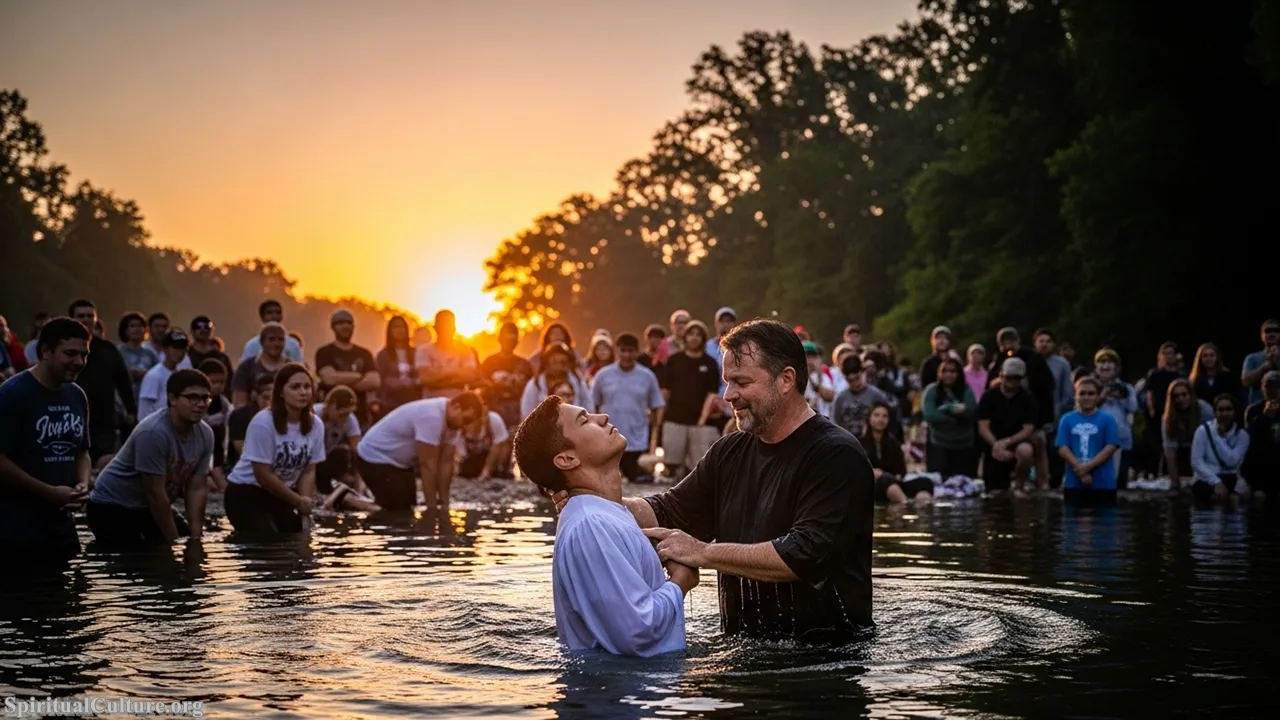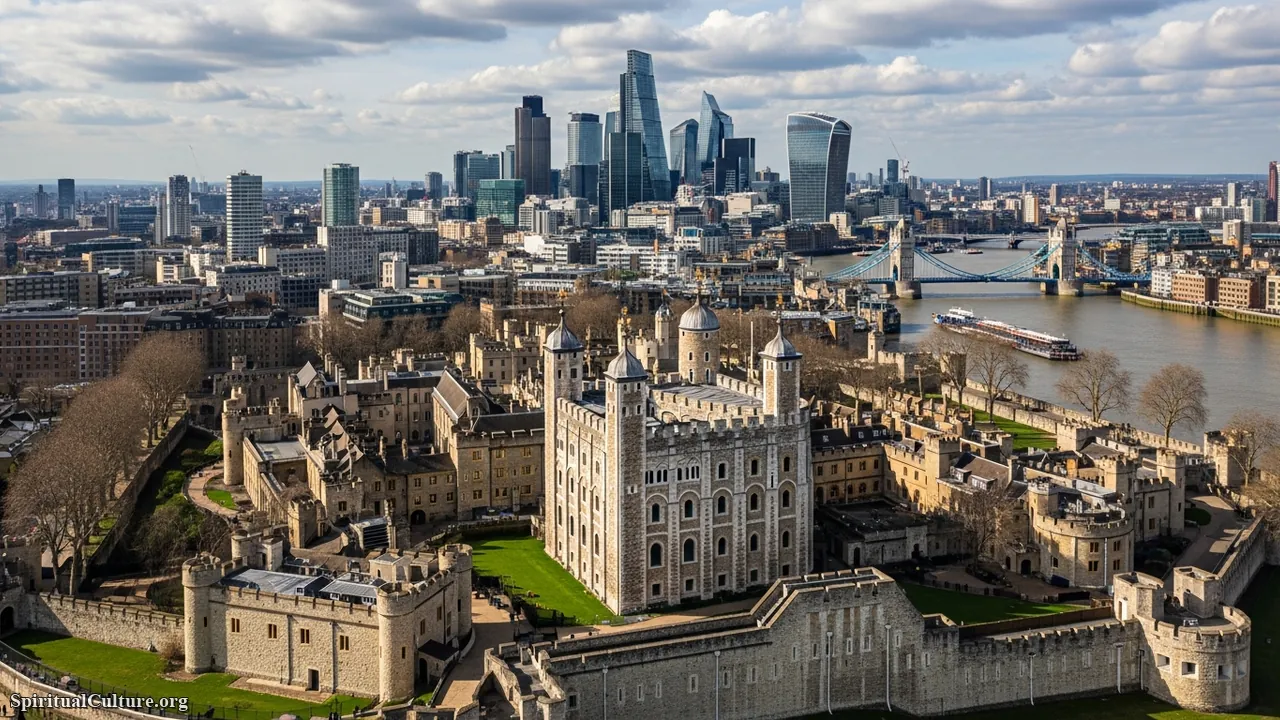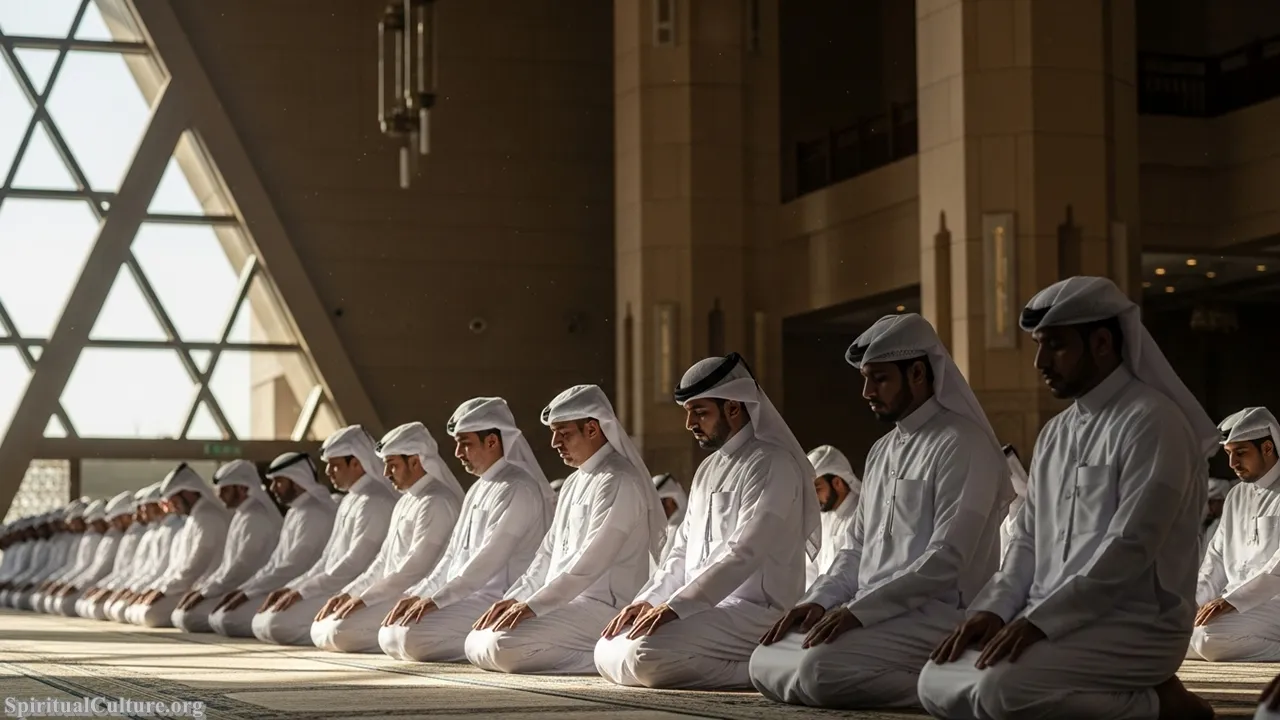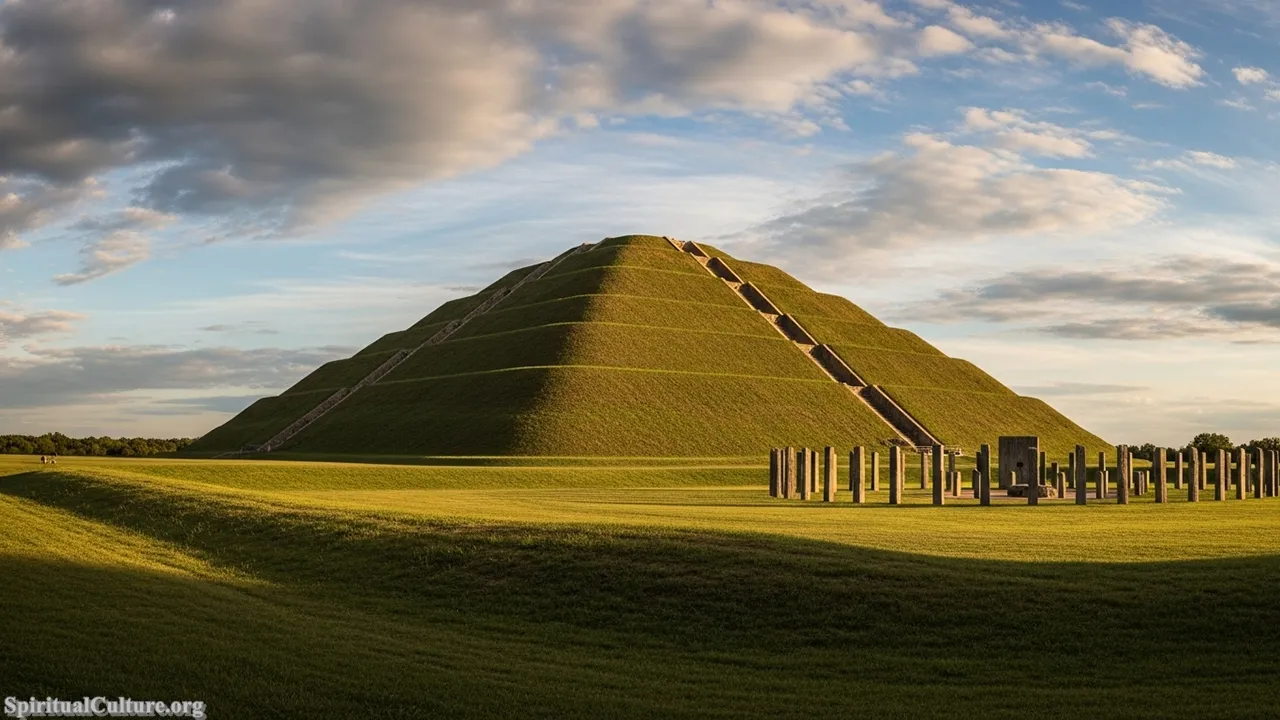Christianity, the world’s largest religion, is a vast, multifaceted spiritual landscape, currently commanding the adherence of over 2.4 billion people worldwide. Its story, spanning two millennia, is one of extraordinary global expansion and, simultaneously, profound theological and cultural diversification. The term “denomination” attempts to categorize the different streams that have emerged from the common source of the life and teachings of Jesus Christ, yet the sheer number of these groups—estimated to be in the tens of thousands—makes a definitive list challenging.
For this Spiritual Culture guide, we focus not on every splinter group but on the largest, most historically significant, and culturally influential families of denominations, reflecting their massive collective spiritual and cultural footprint as of the Current Time of Writing. Our ranking prioritizes size and the historical breadth of adherence, recognizing that a tradition’s longevity and global scale often correlate with its capacity to shape civilization, ethics, and world culture.
This list moves beyond simple membership counts to explore the deeper spiritual impact each tradition has had on art, philosophy, charitable works, and global missions. The great divisions of Christianity—Catholic, Orthodox, and Protestant—represent more than mere theological differences; they embody distinct cultural expressions of faith that have sculpted entire continents and continue to drive spiritual movements into the 21st century.
Table of the Top 10 Largest Christian Denominational Families Worldwide (Current Estimates)
| Rank | Denomination/Tradition | Estimated Adherents (Billions/Millions) | Primary Global Influence | Core Spiritual Emphasis |
|---|---|---|---|---|
| 1 | Catholic Church (Latin & Eastern Rites) | ~1.39 Billion | Global, particularly Europe, Latin America, Philippines | Sacramentality, Papal Authority, Apostolic Succession |
| 2 | Protestantism (Broadly Defined) | ~900 Million – 1 Billion* | North America, Africa, Europe, Asia | Sola Scriptura (Scripture Alone), Justification by Faith |
| 3 | Eastern Orthodoxy | ~230 Million | Eastern Europe, Russia, Greece, Middle East | Hesychasm, Veneration of Icons, Conciliarity |
| 4 | Pentecostalism (Within Protestantism) | ~200–280 Million | Global South (Africa, Latin America), North America | Gifts of the Holy Spirit, Direct experience of God |
| 5 | Anglican Communion/Episcopal | ~85–110 Million | UK, Former British Colonies (Nigeria, Uganda) | Theological “Via Media” (Middle Way), Liturgical Worship |
| 6 | Oriental Orthodoxy | ~70 Million | Egypt (Coptic), Ethiopia, Armenia, India, Syria | Miaphysitism (One Nature of Christ), Ancient Tradition |
| 7 | Baptist Churches | ~51–110 Million | United States, India, Brazil, Nigeria | Believer’s Baptism, Autonomy of the Local Church |
| 8 | Lutheranism | ~70–90 Million | Germany, Scandinavia, United States, Ethiopia | Sola Gratia (Grace Alone), Sacraments (Baptism & Eucharist) |
| 9 | Methodism | ~46–58 Million | United States, UK, South Korea, Ghana | Personal Piety, Social Holiness, Evangelism |
| 10 | Restorationist/Latter Day Saint Movement | ~18–20 Million | United States, Global Missionary Presence | Ongoing Revelation, Restoration of the Original Church |
*Note: Protestantism and Pentecostalism are complex groups. Pentecostalism is often considered a movement within Protestantism but is listed separately due to its massive, distinct global demographic.
Top 10. Restorationist/Latter Day Saint Movement
The inclusion of the Latter Day Saint Movement (LDS), with the largest group being The Church of Jesus Christ of Latter-day Saints, marks a point of theological divergence, as it holds distinct interpretations of core Christian doctrines like the Trinity. Nonetheless, its self-identification as the restoration of Christ’s original church and its global spread warrant its place on this list of influential traditions. This movement is a testament to the idea of ongoing revelation and the capacity for new religious structures to emerge and flourish outside the historical European traditions, now holding a significant cultural presence, particularly in the Americas.

The Spiritual Impact of the LDS tradition is perhaps most visible in its remarkable cultural cohesion and focus on family history. Its emphasis on the eternal nature of the family unit, temple ordinances, and rigorous missionary work creates a profound sense of community and purpose for its members. This culture of intense commitment and self-reliance has allowed it to build an impressive global infrastructure and maintain one of the most effective missionary programs in religious history, deeply embedding its values across diverse societies.
The Preservation Value of the Restorationist movement lies in its modern, organized approach to preserving sacred narrative and identity through a vast archive of genealogical data and temple records. It provides a contemporary case study of how spiritual culture can be actively—and very successfully—built, sustained, and spread globally in the modern era. The commitment of its adherents to a clear moral code offers a reflection on the power of discipline in spiritual practice.
Cultural/Spiritual Highlights
- Ongoing Revelation: Belief in additional scripture beyond the Bible (e.g., Book of Mormon).
- Temple Ordinances: Focus on sacred, exclusive rituals for salvation and eternal family bonds.
- Genealogy & Family History: Massive, religiously-driven effort to trace ancestry, deeply impacting global genealogical science.
- Global Missionary Force: Maintains one of the world’s largest, non-paid missionary forces.
Top 9. Methodism
Methodism, born out of the 18th-century revivals led by John and Charles Wesley, distinguished itself from Anglicanism with its focus on “social holiness” and disciplined spirituality. Today, with an estimated 46 to 58 million adherents across numerous distinct churches (such as the United Methodist Church, African Methodist Episcopal Church, etc.), Methodism remains a powerful force, particularly in the United States, parts of Europe, and West Africa. Its growth story is inseparable from its early commitment to preaching the gospel to the working class and marginalized, often outside established church walls.

Methodism’s Spiritual Impact is most deeply felt in its fusion of personal piety with social activism. The Wesleyan emphasis on sanctification—the process of being made holy—meant that individual spiritual growth must manifest in concrete works of mercy and justice. This doctrine fueled the abolitionist movement, educational reforms, and the foundation of hospitals and universities worldwide, embodying a practical, engaged form of Christian spirituality that believes faith must transform both the individual soul and society.
The Moral Lesson of the Methodist tradition is that authentic faith is a two-fold endeavor: personal transformation and societal engagement. It teaches that one cannot truly love God without loving one’s neighbor, especially the poor and oppressed. The contemporary challenge for Methodism is maintaining global unity amidst cultural and theological disputes, a struggle that reflects the broader difficulties of balancing tradition with modern social realities.
Cultural/Spiritual Highlights
- Social Holiness: The belief that salvation must lead to efforts to alleviate social ills (poverty, injustice).
- The “Aldersgate Experience”: John Wesley’s pivotal conversion, emphasizing a “strangely warmed” heart.
- Class Meetings: Historical, small-group accountability structures fostering discipline and mutual support.
- Hymnody: Charles Wesley’s prolific hymns (e.g., “Hark! The Herald Angels Sing”) form a cornerstone of global Christian worship.
Top 8. Lutheranism
Lutheranism is the direct theological and cultural inheritor of the 16th-century Protestant Reformation, primarily initiated by Martin Luther in Germany. Currently encompassing diverse bodies like the Evangelical Lutheran Church in America (ELCA) and the more conservative Lutheran Church—Missouri Synod (LCMS), its global community stands between 70 and 90 million adherents. Its spiritual and cultural influence is foundational to the concept of Western individualism and the modern emphasis on literacy, having been the first major body to fully embrace vernacular liturgy and scripture.

The Spiritual Impact of Lutheranism is rooted in the doctrine of Sola Gratia (Grace Alone) and Sola Fide (Faith Alone), which liberated the conscience from the necessity of works-righteousness. This profound shift emphasized a direct, personal relationship with God through Christ, without the mediation of complex ecclesiastical structures, empowering the layperson. Luther’s insistence that all legitimate vocations were a “calling” from God (vocation) laid a spiritual groundwork for modern secular labor and professionalism.
In terms of Heritage and Preservation, Lutheranism’s legacy is vast, encompassing a powerful tradition of sacred music (Bach), theological scholarship, and a strong emphasis on public education. Its continued commitment to the authoritative role of Scripture and the Sacraments offers a preserved historical counterpoint to Catholic tradition, reflecting the importance of intellectual rigor and clarity in shaping spiritual doctrine.
Cultural/Spiritual Highlights
- The Five Solas: Core Reformation doctrines like Sola Scriptura (Scripture Alone).
- Vernacular Liturgy: Pioneering worship and Bible translation in the common language.
- Doctrine of Vocation: All legitimate, honest work is a holy calling from God.
- Augsburg Confession (1530): The foundational document outlining Lutheran doctrine.
Top 7. Baptist Churches
The Baptist tradition is a diverse family of churches, not a single unified denomination, characterized primarily by the doctrine of believer’s baptism (baptism only for those who can profess faith) and the autonomy of the local church. With a global presence estimated between 51 and 110 million adherents, major groups include the Southern Baptist Convention (SBC), the National Baptist Convention, and numerous independent bodies. Its spiritual energy is strongly felt across the United States, where it is a dominant religious force, as well as in rapid-growth regions like Brazil and Nigeria.

The Spiritual Impact of Baptist life is tied to its radical commitment to the freedom of conscience. The insistence on believer’s baptism—rejecting infant baptism—was historically a profound challenge to state-church authority, advocating for a church composed purely of regenerate members. This principle translated into a powerful cultural and political tradition of religious liberty and the separation of church and state, which profoundly shaped constitutional democracies, particularly in America.
The Moral Lesson from the Baptist emphasis on local church autonomy is the value of grassroots spiritual democracy and accountability. By placing authority in the gathered community of believers, it highlights the responsibility of every individual member to study scripture and participate in governance. It continually calls Christians back to the foundational act of personal commitment and public declaration of faith.
Cultural/Spiritual Highlights
- Believer’s Baptism: Full immersion of believers as the only valid form of the sacrament.
- Local Church Autonomy: The belief that each congregation is self-governing and independent.
- Soul Liberty: The spiritual right and responsibility of every person to choose their faith free from coercion.
- The Great Commission: Strong, historical emphasis on evangelism and missionary work.
Top 6. Oriental Orthodoxy
Oriental Orthodoxy comprises a group of ancient churches that trace their lineage back to the earliest Christian communities, including the Coptic Orthodox Church, the Ethiopian Orthodox Tewahedo Church, and the Armenian Apostolic Church. This communion of churches holds approximately 70 million adherents, primarily in the Middle East, Africa, and India. Their separation from the Eastern Orthodox and Catholic traditions is rooted in Christological disagreements following the Council of Chalcedon in 451 CE, maintaining a distinct theological understanding often termed Miaphysitism.

The Spiritual Impact of Oriental Orthodoxy is defined by its endurance as a minority faith in the Middle East and its profoundly monastic and liturgical heritage. Ethiopia’s Tewahedo Church, for instance, has preserved unique cultural traditions, including the Ark of the Covenant reverence, and a powerful sense of indigenous African Christianity. For centuries, these churches served as cultural custodians, preserving ancient languages, scriptures, and theological perspectives often under significant political pressure.
In terms of Heritage and Preservation, Oriental Orthodoxy represents a direct, unbroken link to the Patristic Age of Christianity. Their rich liturgical life—characterized by lengthy services, fasting, and deep veneration of icons—is a preserved treasure of Christian practice, offering a glimpse into the spiritual fervor of the early Church. Their ongoing presence today serves as a powerful testament to spiritual resilience in the face of centuries of adversity.
Cultural/Spiritual Highlights
- Ancient Lineage: Direct continuation of the churches established in the Apostolic Age.
- Liturgical Preservation: Maintaining highly traditional, ancient rites and services.
- Miaphysitism: A distinct Christology emphasizing Christ’s single, united Divine-Human nature.
- Ethiopian Zionism: Unique cultural claim of possessing the Ark of the Covenant.
Top 5. Anglican Communion/Episcopal
The Anglican Communion, globally encompassing churches like the Church of England, the Episcopal Church, and the powerful Anglican provinces in Africa (Nigeria, Uganda), unites approximately 85 to 110 million Christians. Originating with the English Reformation, it historically sought a “Via Media” (Middle Way) between Catholicism and Continental Protestantism, resulting in a tradition known for its beautiful, formal liturgy and theological diversity. Its influence is deeply embedded in the cultural fabric of many nations shaped by the former British Empire.

The Spiritual Impact of Anglicanism is best understood through its liturgical genius, codified in the Book of Common Prayer. This text has provided a common language for worship and prayer for centuries, shaping the rhythm of spiritual life for millions and significantly influencing the English language. This tradition’s ability to hold diverse theological viewpoints—from high-church Catholicism to low-church Evangelicalism—fosters a spiritual culture of broad comprehensiveness and theological conversation, albeit one that is currently facing significant internal strains.
The Preservation Value of the Anglican tradition is tied to its role as a spiritual and ethical standard-bearer for many Commonwealth nations. It has championed education, social justice, and ecumenism, showcasing how a historically established church can evolve while maintaining a deep reverence for tradition and order. The balance between reasoned faith and formal, aesthetically rich worship offers a profound model of intellectual and aesthetic spirituality.
Cultural/Spiritual Highlights
- Book of Common Prayer: The foundational text of Anglican liturgy, a literary and spiritual masterpiece.
- Via Media: The theological and liturgical “Middle Way” between Protestantism and Catholicism.
- Archbishop of Canterbury: The spiritual head who serves as a focal point of unity for the global Communion.
- Global South Growth: Rapid numerical growth in African provinces now makes them the demographic heart of the Communion.
Top 4. Pentecostalism (A Movement within Protestantism)
As a vibrant, relatively young spiritual movement that emerged in the early 20th century, Pentecostalism is one of the fastest-growing forces in world religion, with a global estimate of 200 to 280 million adherents in distinct denominations like the Assemblies of God and the Church of God in Christ. Though doctrinally part of the broader Protestant family, its emphasis on the direct, experiential work of the Holy Spirit and spiritual gifts (like speaking in tongues and divine healing) gives it a unique spiritual identity. Its center of gravity has decidedly shifted to the Global South (Africa, Latin America, Asia).

The Spiritual Impact of Pentecostalism is defined by its radical demystification of the divine, making direct spiritual experience and the manifestation of God’s power accessible to every believer. This emphasis on charismatic gifts offers a highly emotional, participatory, and life-changing spiritual path that powerfully resonates in developing nations where rapid social change and acute needs for healing and provision are prevalent. It acts as a massive cultural engine, often synthesizing Christian faith with indigenous cultural forms.
The Reflection on Pentecostalism is its demonstration that spirituality, for many, is a matter of profound, felt experience and present divine intervention, not merely intellectual assent or historical tradition. Its challenge to established, formal church structures is a vital reminder that the spiritual power of Christianity is meant to be a dynamic, living force, capable of mobilizing millions toward social and spiritual transformation.
Cultural/Spiritual Highlights
- Gifts of the Spirit: Emphasis on glossolalia (speaking in tongues), healing, and prophecy.
- Azusa Street Revival (1906): The widely recognized birthplace of the modern movement in Los Angeles.
- High-Energy Worship: Characterized by spontaneous prayer, music, and emotional expression.
- Global South Dominance: The majority of adherents now reside outside of Europe and North America.
Top 3. Eastern Orthodoxy
Eastern Orthodoxy represents the second-largest single body of Christians, with an estimated 230 million adherents, primarily across Russia, Greece, Eastern Europe, and the Middle East. It is a communion of autocephalous (self-governing) churches, all sharing the same faith, liturgy, and canonical tradition, tracing their unbroken lineage directly back to the Apostles and the early Ecumenical Councils. Its central spiritual focus is on Theosis—the transformative process of union with God.

The Spiritual Impact of Orthodoxy lies in its profound mysticism, deep liturgical continuity, and the veneration of the icon. Unlike Western Christianity, Orthodox spirituality stresses Conciliarity (the governance of the Church by bishops in council) and has largely avoided the centralizing tendencies of the papacy or the fragmented nature of Protestantism. The liturgy, often described as “Heaven on Earth,” is a multi-sensory spiritual experience designed to lift the worshiper into the transcendent reality of the Kingdom of God, preserving ancient Christian aesthetics.
The Heritage of Eastern Orthodoxy is vast, having shaped the cultural, artistic, and political landscapes of Byzantium, the Balkans, and Russia. Its commitment to preserving the tradition (phronema) of the early Church provides a vital link to Christianity’s historical and theological foundations, emphasizing that salvation is not merely a legal transaction but a lifelong, communal journey of spiritual transformation toward God’s likeness.
Cultural/Spiritual Highlights
- Theosis: The doctrine of union with God (deification), the goal of Christian life.
- Icons & Iconography: Not just art, but “windows to heaven” and spiritual aids for prayer and devotion.
- The Filioque Clause: The theological disagreement with Catholicism over the Holy Spirit’s procession.
- Hesychasm: A mystical tradition centered on the Jesus Prayer and stillness of the mind.
Top 2. Protestantism (Broad Denominational Family)
Protestantism, as a collective body of churches that emerged from the 16th-century Reformation, is the second-largest family of Christian traditions, encompassing a massive, diverse group ranging from Lutherans and Baptists to Pentecostals and Non-denominational groups, with a total adherence estimated between 900 million and 1 billion. This tradition is characterized by the five Solas, especially Sola Scriptura (Scripture Alone), positioning the Bible as the sole infallible rule of faith and practice.

The Spiritual Impact of Protestantism is unparalleled in its role in shaping modernity, emphasizing the priesthood of all believers, which democratized access to God and spurred massive increases in literacy and individual conscience. The Protestant work ethic, social reforms, and global missionary movements—especially since the 18th century—have profoundly influenced political, economic, and cultural development across every continent, fundamentally changing the relationship between faith and society.
The Moral Lesson and enduring value of Protestantism are its continual self-critique and emphasis on personal faith and scriptural authority. While the sheer fragmentation into numerous denominations is often cited as a weakness, it also represents an unrelenting spiritual drive to reform the Church and adhere to theological truth as understood from the Bible, prompting vibrant theological discussion and spiritual dynamism across the globe.
Cultural/Spiritual Highlights
- Priesthood of All Believers: The spiritual equality of all Christians; no need for priestly mediation.
- Sola Scriptura: The Bible as the ultimate authority in all matters of faith and practice.
- Emphasis on Evangelism: A continuous, highly organized drive for world missions and conversion.
- Modern Ecumenism: The central role of Protestant leaders in contemporary efforts to unify the global Church.
Top 1. Catholic Church (Latin & Eastern Rites)
The Catholic Church, comprising the Latin Church and the 23 Eastern Catholic Churches, is the largest single body in Christianity and the world’s largest religious organization, with approximately 1.39 billion baptized members as of the Current Time of Writing. Tracing its origins to the apostles, particularly St. Peter, its enduring authority is centered in the Holy See in Rome. This global institution has historically defined Western civilization, theology, and philosophy, reaching every corner of the world through missionary effort.

The Church’s Spiritual Impact is based on its core identity as the universal Church, characterized by the seven Sacraments as the primary means of grace and the doctrine of Apostolic Succession, ensuring a direct spiritual and administrative link back to Christ’s first followers. This tradition’s profound sense of continuity, coupled with a rich liturgical life and a vast body of social teaching (Catholic Social Teaching), provides a comprehensive spiritual worldview that is deeply ritualistic, intellectually rigorous, and globally cohesive.
The Reflection and Preservation Value of the Catholic Church lie in its role as a monumental custodian of historical, artistic, and philosophical heritage. Its libraries, cathedrals, universities, and charitable networks constitute the largest non-governmental humanitarian effort in the world. The current focus under Pope Francis on social justice, environmental stewardship, and interfaith dialogue demonstrates its ability to bring a two-millennium spiritual tradition to bear on the most pressing issues of the Current Time of Writing, continually calling the world to a shared moral vision.
Cultural/Spiritual Highlights
- Apostolic Succession: The belief in an unbroken spiritual lineage from the Apostles to the present bishops/Pope.
- The Seven Sacraments: Central rituals (Eucharist, Baptism, Confession, etc.) as conduits of divine grace.
- Papal Authority: The unique spiritual and jurisdictional authority of the Bishop of Rome (the Pope).
- Catholic Social Teaching: A body of doctrine on human dignity, poverty, and social justice.
Conclusion
The spiritual map of Christianity, as revealed by this Top 10 guide, is a testament to the remarkable dynamism and global resonance of its core message. From the monumental, unified continuity of the Catholic Church to the explosive, experiential zeal of Pentecostalism, and the ancient, mystical endurance of Orthodoxy, each tradition is a unique cultural expression of the central belief in Jesus Christ. At Spiritual Culture, we celebrate this diversity, recognizing that the sheer size and cultural impact of these denominations reflect a profound human need for spiritual meaning, communal worship, and ethical guidance. The Christian faith is not a monolith but a vibrant, living river that has shaped continents, inspired humanity’s greatest art and charity, and continues to drive the spiritual journeys of billions, demonstrating that profound unity can exist amidst a stunning array of heritage and practice.




